I’ve feel like I’ve been away from photography for a while. Like most of people these days, the general state of the universe has got me down. Don’t get me wrong, I’m not on the breadline and I’ve still been taking photos, but I’ve just not been feeling it.Since COVID, its been a time of frustration for many people, as we watch the fat cats get fatter, and rest of us are pretty much bewildered by our ever decreasing bank balances. Its a strange world we live in and I think that’s why most of us here hold a camera in our hands and wish we could be transported back to a happier time, albeit seen through rose tinted glasses on black and white film.
Like many photographers, I am always looking for the next camera that will make me complete. I own many, and none have them have turned me into a David Bailey (Olympus mju) or a Don McCullin (Nikon F). I’ve got a couple of Rolleiflex’s, but I am certainly no Vivian Meier. But if I was born into an earlier time, where the airfare was cheap and the world was my proverbial oyster? Who knows?
Because of these dreams, I think the one camera that sits at the pinnacle of most peoples wish list is the Leitz made Barnack Leica III. A purely mechanical little beauty. I’m not in any way a Leica fanboy. I’ve owned a few in the past and have always found them a bit fiddly and slow. I’ve been extremely happy with the admiring glances you get from passers-by but its never meant that I would keep one for any length of time. They always sell so well, therefore I’m happy to keep looking and buying if I can buy one for the right price.
So, this brings me to the subject of my story.
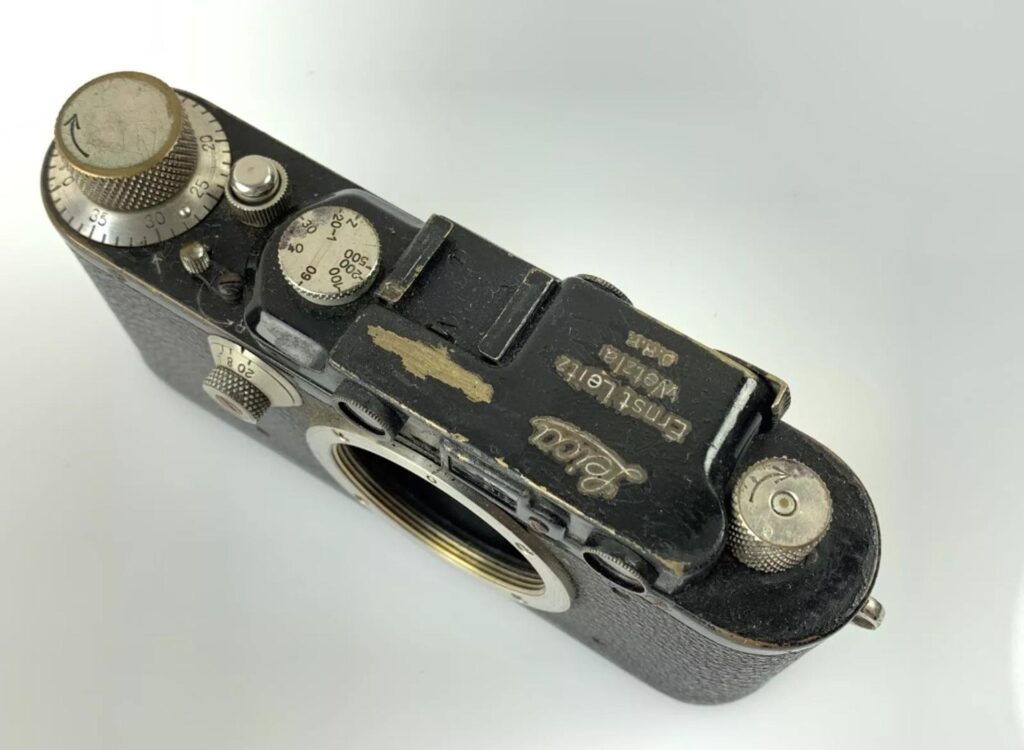
One night, as I’m trawling through the thousands of “worked 40 years ago – excellent condition” film cameras on eBay, I spot a very poorly looking *spares or repair* Leica III, circa 1935. Its a reasonable price. Its black. I’m interested – for the right price, of course. Its battered, but that doesn’t bother me. Its not working. Again, it doesn’t bother me as I have a guy who can fix almost anything. The one thing that concerned me was the defaced serial number on the top plate, so I sent a screenshot to my camera guy (Rob) and immediately he said it was a fake, and advised me not to buy it. I really wasn’t so sure. I would normally follow his advice as he has more experience than me, but it just looked right and had the slow shutter speed dial, which I was pretty sure wasn’t a part of the Russian trickery on the faked ones I had seen in the past. It also just didn’t look faked. It wasn’t over the top. There was no fascist insignia or other such obvious tricks to lure the gullible.
After a bit of bartering, it was mine. I did a bit of research and found that serial numbers were sometimes defaced when a soldier had bartered with the German owner for a packet of cigarettes or loaf of bread. It could also have been stolen, and the serial number destroyed so the rightful owner couldn’t be found. Whatever the story, I’m sure it stemmed from hardship during and after World War 2. If only we knew what photos it had taken. Then again, maybe its better to let the past stay where it is. The one bit of good news was that the serial number was also stamped inside the top plate, so all was not lost.
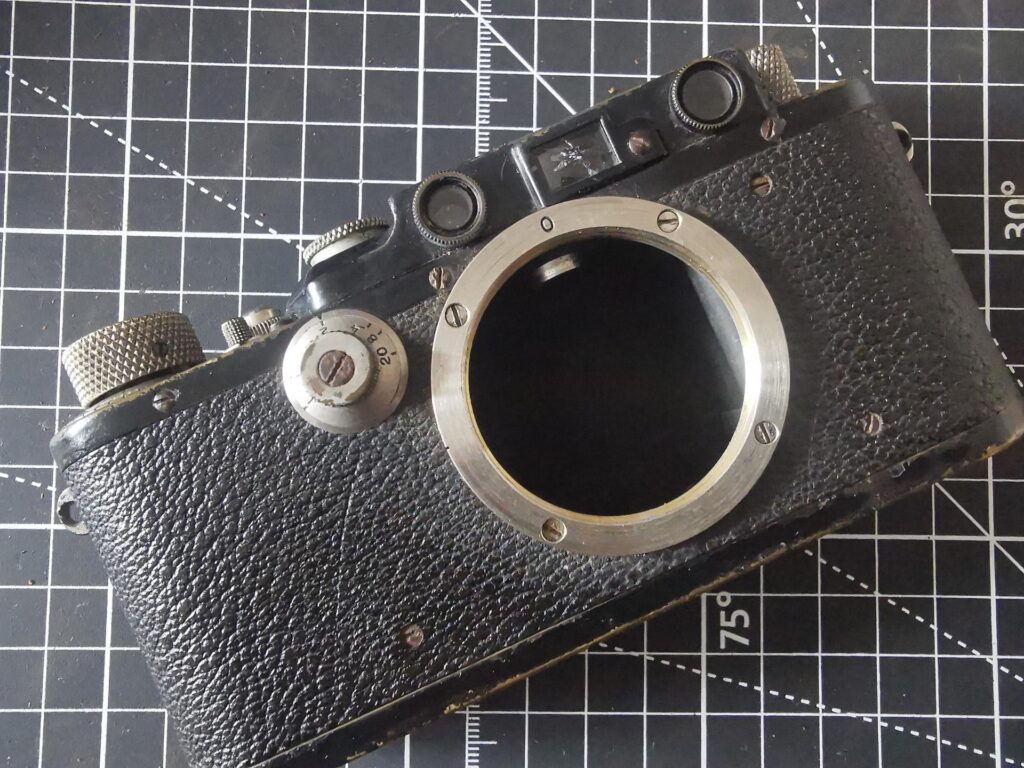
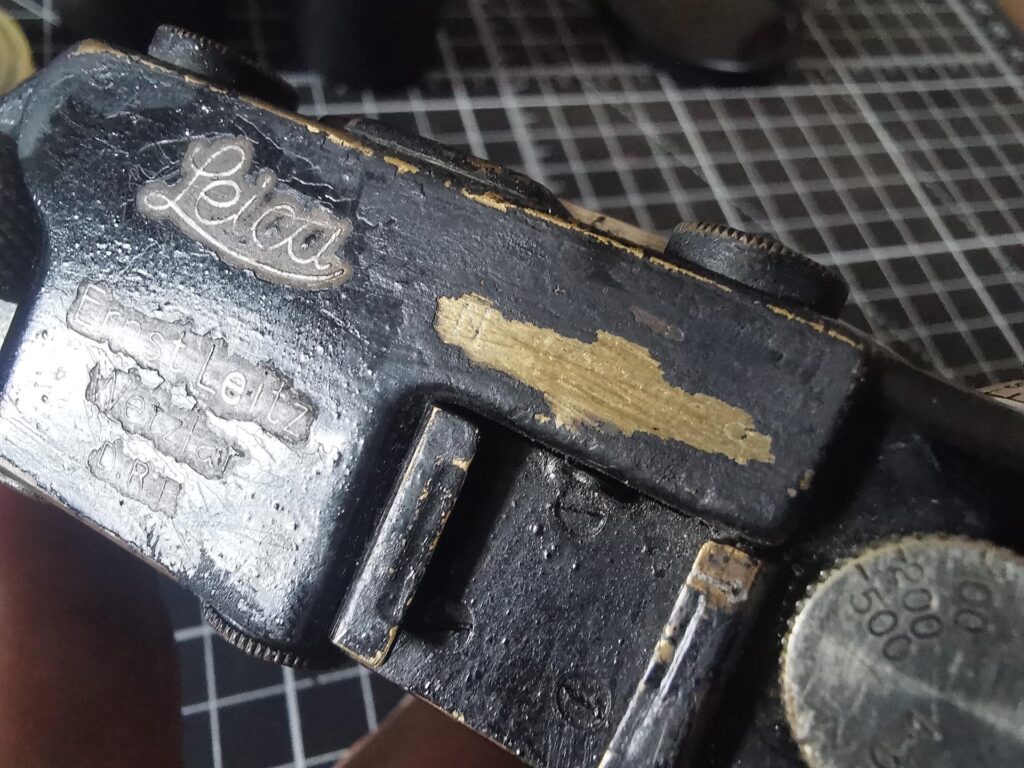
The camera arrived and the photos on the listing really hadn’t done it justice. This camera had had a lot of use. The black paint was worn through to the brass pretty much everywhere. There was what looked like secondary black paint that maybe had been an attempt to conceal the wear, or was it that it had originally been a silver version painted black at a later date. So many questions, but the main thing was that it wound ok and the faster shutter speeds worked. Rather than send it straight off for a service, I decided to do what a camera does best, and stick a roll of Ilford HP5 in it and see if the old girl still had it in her.
I’m afraid to say that the results weren’t good. After a day walking around Birmingham with a bag full of cameras, I was surprised that mechanically the camera worked really well. The photos it produced were another matter. It actually looked like I’d been shooting in Hell, and this is no reflection on the lovely city that the Brummies’ call home. I knew that this wasn’t a developing error as I had sent them to AG Photolabs and had never had a problem with the negatives from them before. Some images were fine, but then others looked like they had the mother of all light leaks. It looked like there was a bleed from the right hand side of the film. Either that or I had entered the Matrix. Very strange. Off it went to Rob at Vintage Cameras Galore for a service and the search for the serial number.
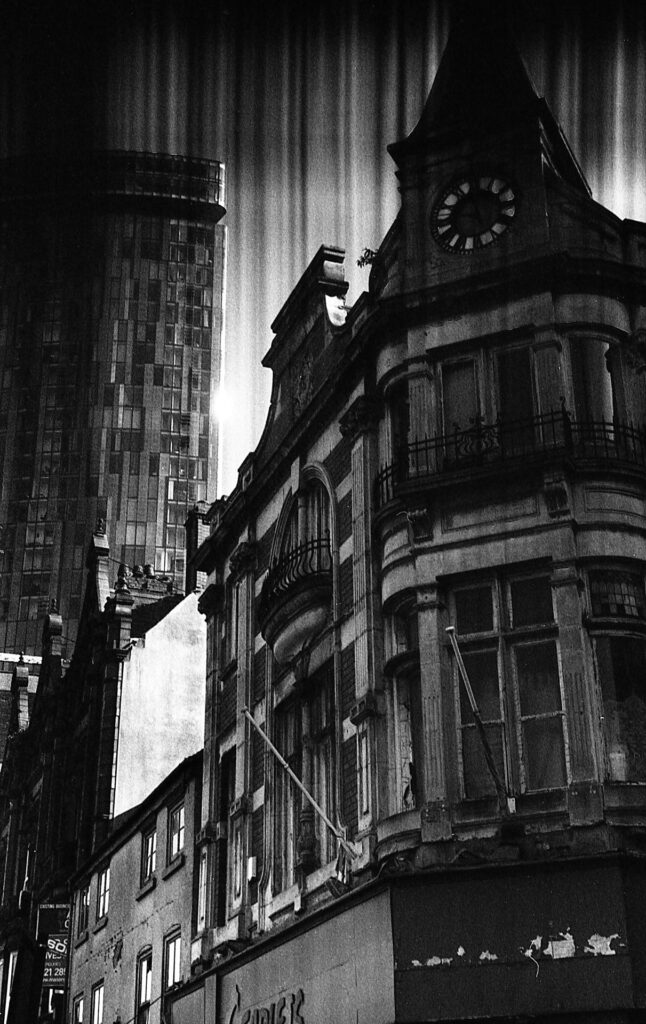
Now this is where the story gets very interesting.
Rob takes the camera apart and gives me the news I was hoping for, that its definitely a Leica. Thank God for that. Next he sends me photos of the serial number which is stamped underneath the top plate. The number is 120608. This makes it a Leica III made in 1933, earlier than first thought. Now that throws up more questions as, when looking on the internet, this was from a batch of chrome bodied cameras to leave the Leica factory. Was it a later repaint as I had previously thought. Initially Rob thought the answer was yes, but after taking off the messy top coat, he told that it had always been a black bodied camera as there was no chrome present at all. The plot thickens.
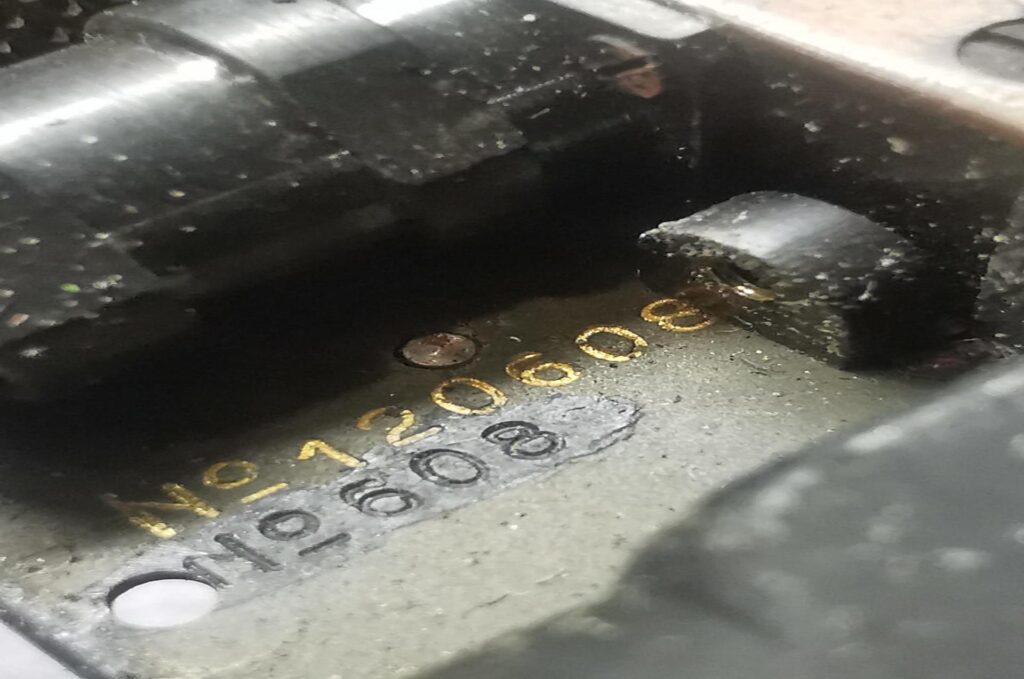
I put the photos I had onto the Leica Facebook group, to see if anyone could shed light onto the anomalies we’d found. People agreed with me that the serial number was probably defaced after World War II, for whatever reason, probably as it was looted or taken as spoils of war. Then a very interesting comment was posted by a German Leica enthusiast. For privacy reasons I wont post the screenshot I have or his name.
“It was a Luftwaffe Eigentum Leica”
“The Number 120608, my old friend Herman (he died 1990) was a Leica mechanician 1935-40. He had a list of Wehrmacht cameras”
When I pushed him for more information, unfortunately he had none. If only I could get hold of that list. What a read that would be.
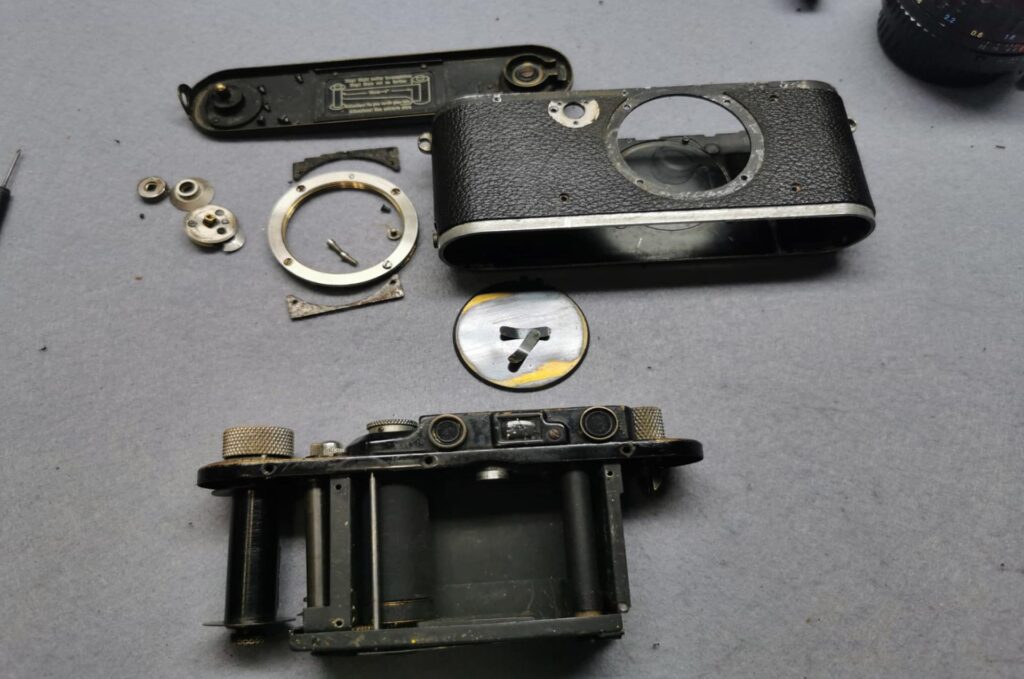
Anyway, back to my now, in pieces, Leica III. Rob said he’d never seen a camera with as much wear. Did I want him to do a full refurb? Not a chance. Its old and battered just like me and I’m happy to keep it this way.
He repainted the film gate, which in his words, had had a sh*t load of film through it. More worryingly, he couldn’t find the source of the light leak. He said the shutter curtains were in surprisingly good condition. Then late one night, I get a frantic WhatsApp message from him with a photo that initially just looks like a black screen.
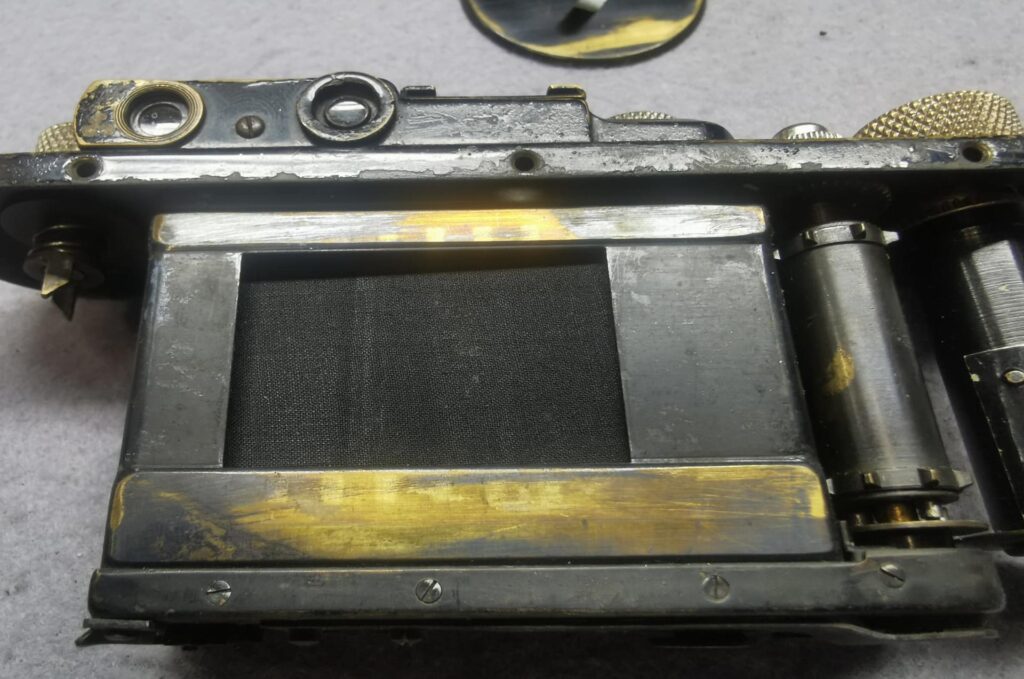
“Can you see it?” he excitedly asks. “What?” I respond, half asleep. It turns out there is the tiniest of holes in the curtain. He’s been up all night trying to find it and finally saw that minute pinprick of light. It seems that this, coupled with the shiny surface of the worn film gate was what had caused the light leaks and my descent into the Matrix.
Happy that it seemed all was well, I emailed leica-camera.com with all the information I had, hoping that they could shed some light on the early history of my camera. What they came up with was a little disappointing, but still nice to know.
Leica III with the serial number 120608 left the Leitz factory on 14th November 1933 and its destination was… London. Unfortunately no more details were found, including the recipient. When asked about the colour difference, I was told it happened in the early days that a camera was customised for a particular customer. So that was it. Unless anyone knows better, my little Leica was shipped to London in 1933, destination unknown. Certainly makes the Luftwaffe link tenuous, but I suppose it could have gone to the German Embassy as relations were still cordial in ’33. On the other hand, does it really matter that I don’t know its original recipient? I gaze at the beautiful brassing to the body and look at the photos of the film gate and know that this camera has had a hell of a life. It has really lived, and even though I know no more than its birthday and where it was first held by its new owner, I know that this camera has lived.
So, it was back in my hands. What would I do with it? I am a trader. I sell film cameras. This is a film camera. But could I let it go? Of course, everything has a price, and the answer is yes if someone offers me a gazillion dollars. As I always do before offering a camera for sale, I loaded it with Ilford HP5 and set off to find something interesting to shoot. Near to me is a Marina and Canal, so with the sun shining on my back, off I went. I snapped away at all the happy people and colourful boats in the late Autumn sunshine. I met an old boy who was an ex-RAF photographer who asked if he could have a look at the Leica. He was blown away by the history of the camera. This is the one thing I love about film photography, you meet some lovely people. After a bit of effort I managed to prise the camera out of his hands. I politely told him that if he had a gazillion dollars he could keep it. He wiped away a tear and said that he didn’t, so I went home to develop the film.
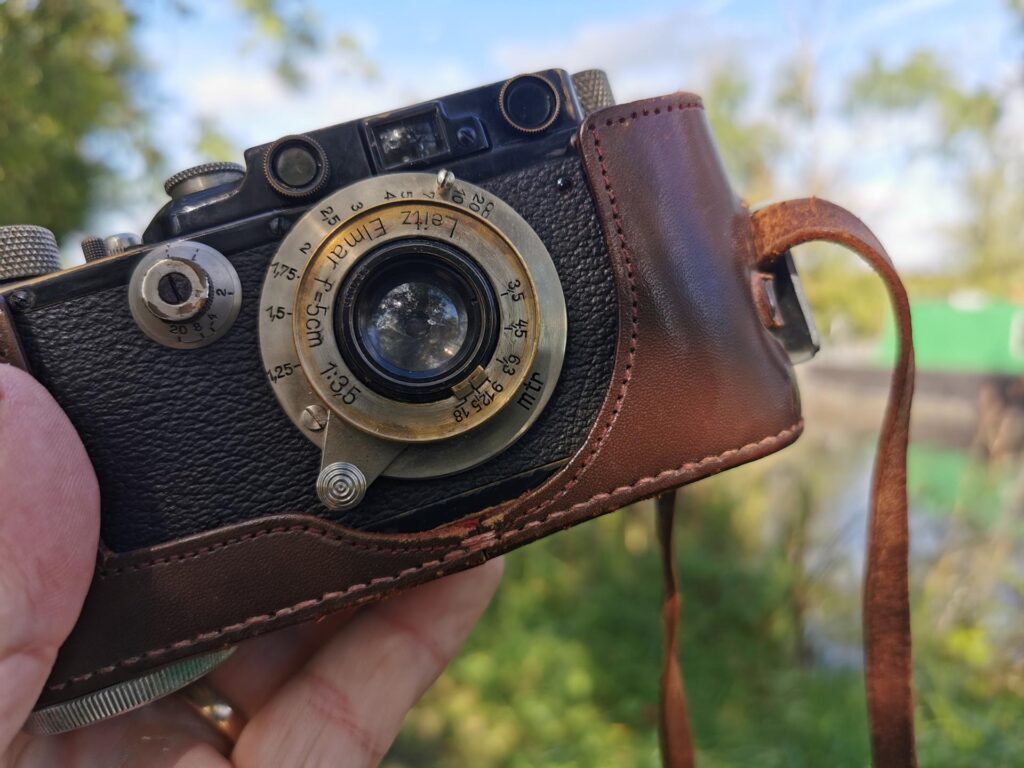
I’ve started to develop my own black and white film again. Not because I enjoy it, but because I’m too tight to pay someone else to do it. I am normally pretty good at it, and of course, because this was an important film from a special camera, I completely cocked it up. I really am too embarrassed to tell you that I loaded the film onto the reel, got side-tracked, opened the bag up and took the Patterson tank out. Then thought, “Hold on, did I put the film in?”. The answer was no.
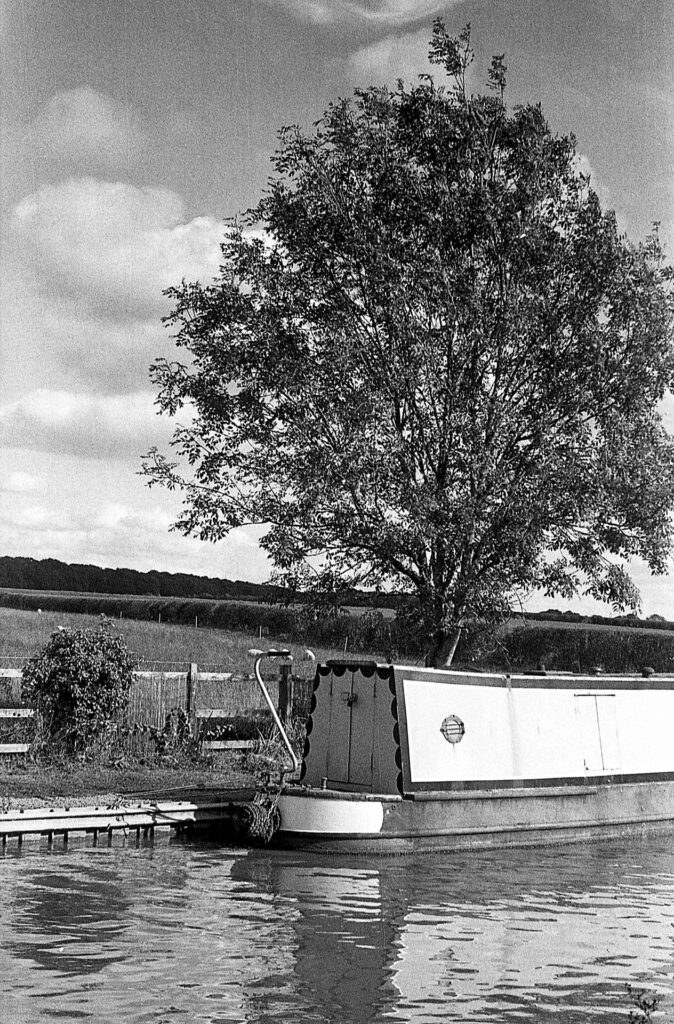
Needless to say, the film was pretty fogged when I eventually took it out to dry. I scanned with my Epson v600, and there was a couple of good images, but the main thing was that there was no light leaks. The images were nice and contrasty, as sharp as they ever need to be from a geriatric lens. How can a 91 year old camera and a 89 year old lens work so well? Its like the worst double act in history but it shows what a special little package left the Leitz factory in Wetzler, 91 years ago, and travelled 456 miles to its new home in London.
The story of what happened to the little Leica in the proceeding 91 years is a mystery. How it came into my hands is pure chance. Will someone else be adding to its story in the near future? Only if they have a Gazillion Dollars.
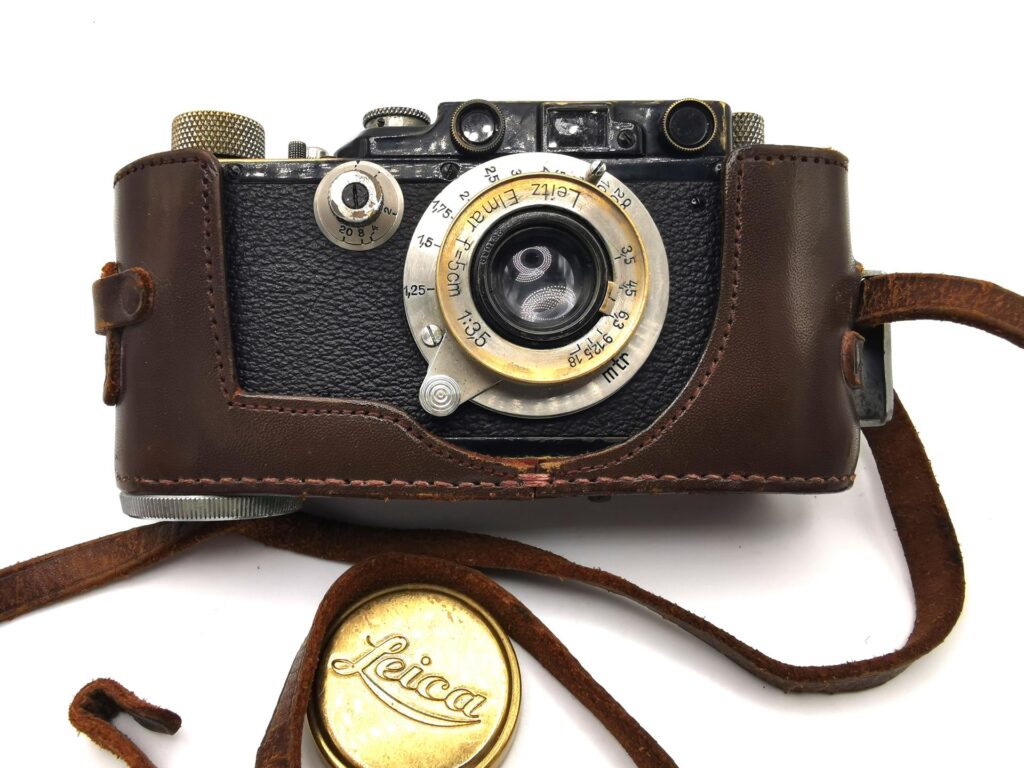
A big thank you to the following for their help and professionalism:
AG Photolabs – Photographic & Art Lab Services
Vintage Cameras Galore – Camera Servicing
UPDATE: It has been confirmed by Michael Baumeister that the camera left Leitz as a batch of 200 black bodies. This came from the “Hahne list”, published by the Leica Historica Society. Many thanks Michael
Share this post:
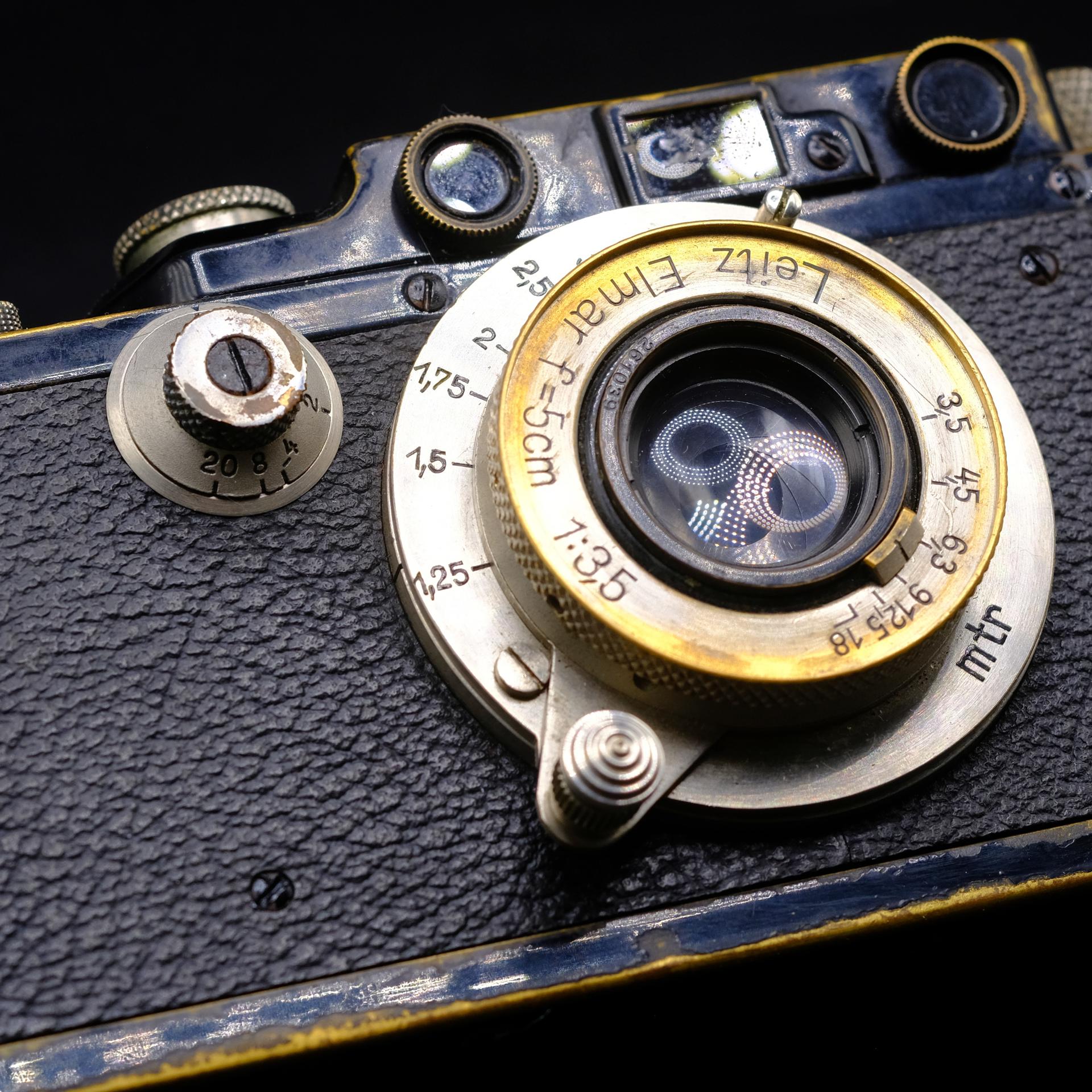
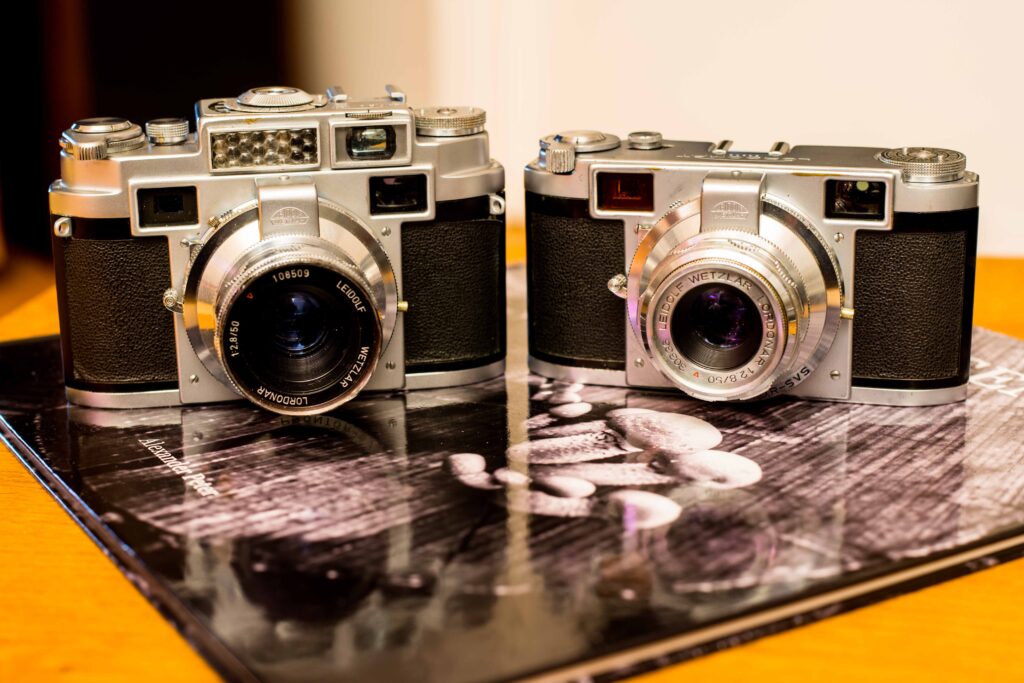

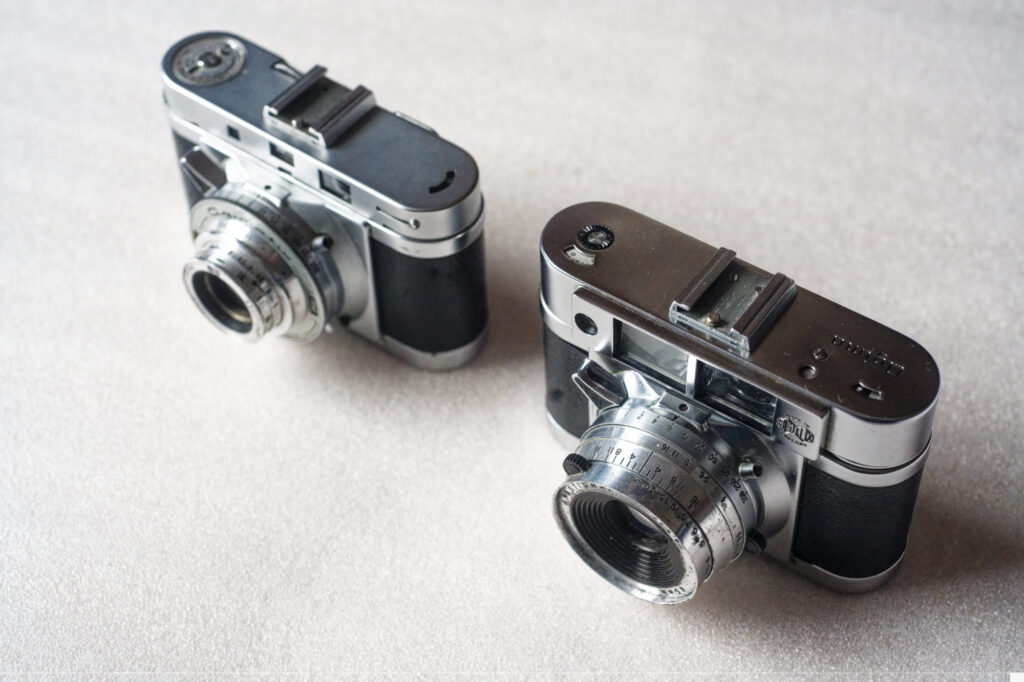
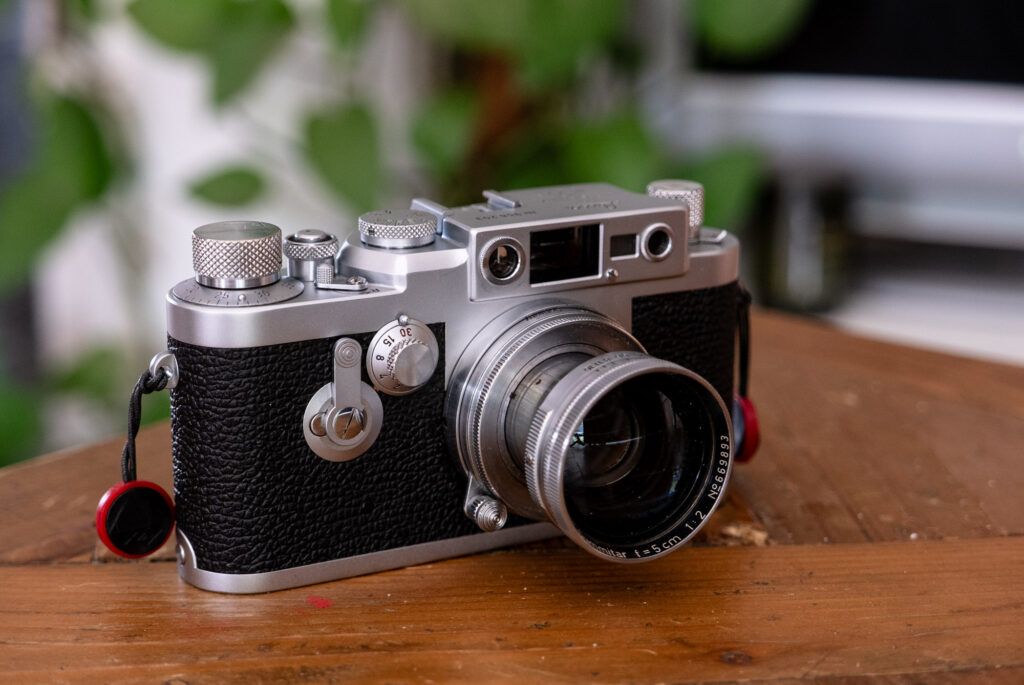




Comments
Peter Kay on Leica III from 1933 – Perfectly Imperfect
Comment posted: 27/11/2024
Comment posted: 27/11/2024
Dave Donnelly on Leica III from 1933 – Perfectly Imperfect
Comment posted: 27/11/2024
Comment posted: 27/11/2024
Steve Scarlett on Leica III from 1933 – Perfectly Imperfect
Comment posted: 27/11/2024
But I did find your Rob a while back.I'd bought nice looking but not very well ContaflexIV. Couldn't find anyone interested in sorting it until I stumbled across Rob. He had some things going on in his life that caused delays in the repair- but repair it he did...and then due to the delays he refused any payment!
Great bloke and very capable.
Enjoy your Barnack!
Steve
Comment posted: 27/11/2024
Steve Scarlett on Leica III from 1933 – Perfectly Imperfect
Comment posted: 27/11/2024
Comment posted: 27/11/2024
John Furlong on Leica III from 1933 – Perfectly Imperfect
Comment posted: 27/11/2024
Comment posted: 27/11/2024
Comment posted: 27/11/2024
Thomas Wolstenholme on Leica III from 1933 – Perfectly Imperfect
Comment posted: 27/11/2024
Comment posted: 27/11/2024
davesurrey on Leica III from 1933 – Perfectly Imperfect
Comment posted: 27/11/2024
BTW your Bohocamera link reports "website expired."
Comment posted: 27/11/2024
Steve Kotajarvi on Leica III from 1933 – Perfectly Imperfect
Comment posted: 28/11/2024
I have a iii as well and love using it. Unfortunately it has some leaks in the curtain. Hopefully I’ll get my priorities straight, stop buying other cameras that might be the one, and get it fixed.
Comment posted: 28/11/2024
Tom Aspin on Leica III from 1933 – Perfectly Imperfect
Comment posted: 29/11/2024
I have a black II, also from 1933, which was also originally listed as a chrome, so maybe the record keeping was inaccurate at the time. The top plate engraving on mine is similarly shallow ( unlike the later cameras), making it quite easy to scratch out the serial number.
https://photos.google.com/photo/AF1QipOurzfHS2P2f6TY_IE7UydxR2G4ZbDJXQoGkNSx
I doubt mine has ever been serviced, and it was a real fight to loosen the lens, but the speeds above 60th are atill relaiable, and remarkably the shutter curtains are leak free. At some point it will get a service, but not restoration
I have to say I have a soft spot for the older screw leica bodies with the separate viewfinder and rangefinder windows, I find them a bit easier to use.
Comment posted: 29/11/2024
Paul Quellin on Leica III from 1933 – Perfectly Imperfect
Comment posted: 29/11/2024
Comment posted: 29/11/2024
Scott Gitlin on Leica III from 1933 – Perfectly Imperfect
Comment posted: 10/12/2024